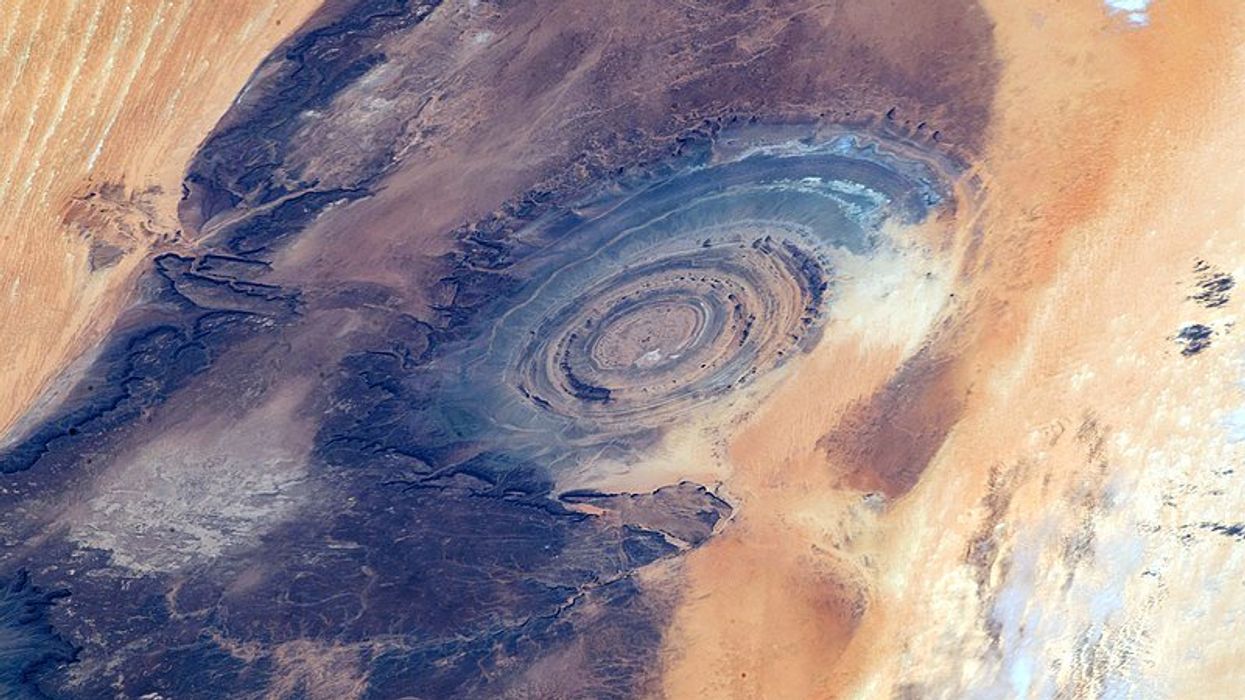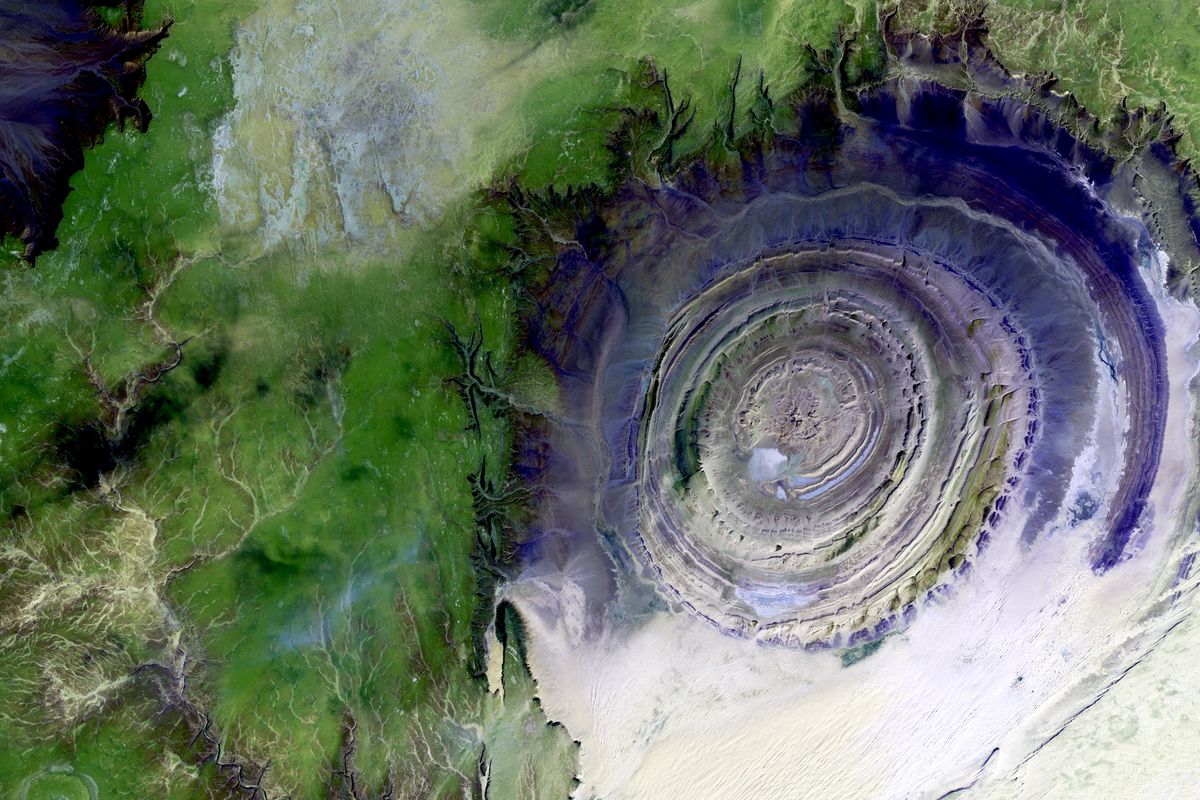Science & Tech
Harriet Brewis
Jan 23, 2024

The Richat Structure, also known as the Eye of the Sahara, seen in all its glory from space
(NASA)
It’s not hard to see why people think the Sahara Desert’s most stunning geological phenomenon was a gift from outer space.
The Richat Structure – more poetically known as the Eye of the Sahara – looks like the swirling scars of a major impact with Earth.
NASA describes the 30-mile (50km)-long formation, which lies in Mauritania, as a “conspicuous bull’s-eye in the otherwise rather featureless expanse of the desert”.
The space agency points out that the structure has been a useful landmark for astronauts since the earliest space missions thanks to its striking visibility from the cosmos.
A number of theories have been put forward over the years to explain the anomalous apparition, including that it is, in fact, the remains of the lost city of Atlantis.
Proponents of this whackier hypothesis argue that the structure closely resembles Plato’s descriptions of the legendary city.
However, we should stress that these claims are merely conspiracy fodder, and there’s no evidence that Atlantis ever existed beyond the confines of Greek philosophy.

A more credible explanation is that the eye was an enormous impact crater, left by a meteorite or asteroid during our planet’s early years. But even that’s been refuted by experts.
Instead, the broader consensus is that the Richat (or rīšāt – meaning “feathers” in the local dialect) formed when a volcanic dome hardened and then eroded over time, exposing the onion-like layers of rock.
The structure is believed to have been created by the uplift of rock layers, possibly caused by tectonic forces or magmatic activity, as Geology Sciencenotes.
Over the years, wind and water erosion then sculpted the landscape, exposing the concentric layers of rock that we see today.

NASA furthers this theory, but adds that the Eye is most likely an uplifted geologic dome, also known as a domed anticline, which consists of a fold in rock layers.
Over time, different erosion rates between the rock types in the structure and surrounding landscape may have seen softer layers removed, exposing the more resistant layers and thereby creating the ring pattern.
Whatever its precise origins, the stunning structure continues to inspire awe and admiration across the world – and, thanks to its staggering size, above the world, too.
Sign up for our free Indy100 weekly newsletter
Have your say in our news democracy. Click the upvote icon at the top of the page to help raise this article through the indy100 rankings
Top 100
The Conversation (0)













